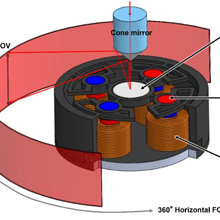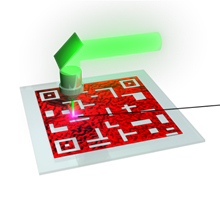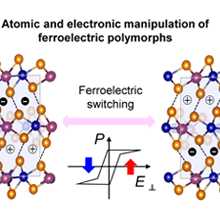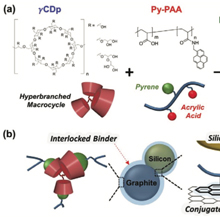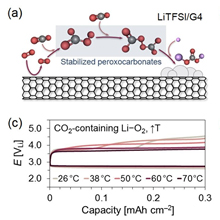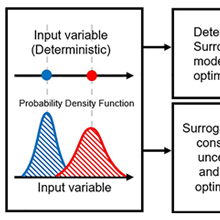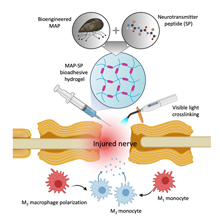본문
Electromagnetic omnidirectional scanning micromirror with multi jet fusion printed structures for smart factory applications

By prof. Chang-Hyeon Ji,
Electronic and Electrical Engineering
Research Profile
cji@ewha.ac.kr
Recent advances in information and communication technologies have led to a massive paradigm shift in the manufacturing industry, and a wide variety of research efforts are underway to realize a smart factory. Many different sensors are required for monitoring and data collection from the working environment and equipment of the smart factory. Object recognition and obstacle detection are critical for the operation of unmanned aerial vehicles such as drones and autonomous delivery and surveillance robots. Corresponding performance can be improved by applying the light detection and ranging (LiDAR) sensors, but relatively high cost has always been a big hurdle for mass production and deployment of these sensors. Up to the present, many different research efforts have been made to realize cost-effective LiDAR systems. Recently, there has been growing research interest in utilizing the micro-electro-mechanical systems (MEMS) scanning micromirror to develop more cost-effective and high-performance LiDAR systems. Although the required field-of-view (FOV) may differ from one application to another, an omnidirectional scan capability is ideal for many autonomous operation scenarios. An omnidirectional scanning micromirror can provide up to 360° FOV in the horizontal scan-axis without the aid of conventional motor-driven mechanisms.
In this research, a new type of omnidirectional scanning micromirror is presented. The proposed device is fabricated by the 3D printing technology using the multi jet fusion (MJF) process. The target application of the designed scanning micromirror is a low-cost LiDAR system with a large lateral FOV for smart factories. This work is the first approach to fabricating MEMS scanning micromirror using the MJF process. In contrast to the conventional subtractive manufacturing processes, additive manufacturing (AM), commonly known as 3D printing, enables the fabrication of complex 3D structures as the structural material is stacked layer-by-layer. Although the competitive edge of utilizing the 3D printing technology depends heavily on the target application, 3D printing generally makes it possible to fabricate complex geometries at a competitive cost and reduce production lead time.
The proposed electromagnetically actuated wobbling scanner has an aluminum-coated 6mm-diameter mirror supported by quadpod springs and magnets for actuation. The analytic model for optimizing the driving coil is presented and compared with the finite element analysis results. The core part of the structural layer is fabricated by the 3D printing process and assembled with a separately fabricated reflective surface, permanent magnets, and coils. Three different combinations of magnets are tested to improve the optical scan angle of the device and provide a wider FOV. The one-dimensional horizontal scan angle of 15.2° is obtained at 415 Hz, and 14.5° is obtained at the vertical scan mode at 406 Hz. The applied current at both scan modes is less than 100 mArms. The two-dimensional (2D) scan capability is also analyzed by generating the Lissajous, circular, and spiral scan patterns. For the spiral scan, a 2D FOV of 8° is achieved with the driving frequency of 400 Hz and the phase difference of 120°, which is equivalent to the FOV of 360°×4°, the vertical angular resolution of 0.01°, and frame rate of 1 fps for LiDAR system optics. The amplitude modulation depth and frequency are 100% and 1 Hz, respectively. With many advantages, including rapid-prototyping, low-cost, and compactness, proposed 3D printed omnidirectional scanning micromirror can potentially be applied to various smart factory applications such as unmanned aerial vehicles, surveillance robots, and autonomous delivery vehicles.
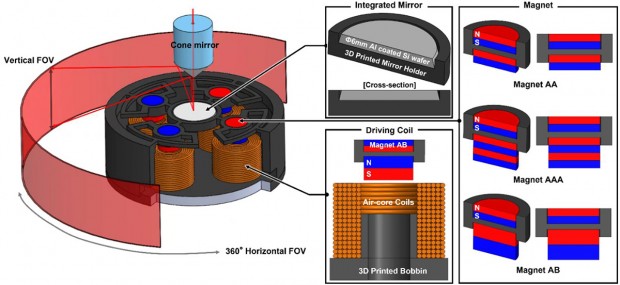
Fig. 1. Schematic diagram of the proposed 3D printed omnidirectional scanning micromirror and 360° scanning concept

Fig. 2. (left) fabricated omnidirectional scanning micromirror, (middle) rosette scan pattern generated with the fabricated device, (right) spiral scan pattern generated with the fabricated device
* Related Article
Jeong-Yeon Hwang, Jiyoun Seo, Chang-Hyeon Ji, Electromagnetic omnidirectional scanning micromirror with multi jet fusion printed structures for smart factory applications, Additive Manufacturing Volume 55, July 2022, 102868


